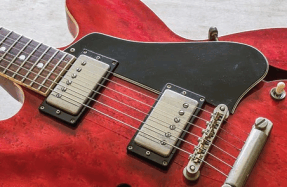THE ROAD TO MUSIC CITY
How long was the transitional period between the Memphis plant closing and ES production recommencing in Nashville? Were there any logistical challenges?
“It was about two years before we were really back in business with ES models. Bringing them home to Nashville and especially splitting them between Gibson USA and Gibson Custom Shop made sense – and we were fortunate that many of our amazing Memphis employees made the move to Nashville to of logistical challenges, some of which were just placement of machinery but also trying to get consistency and quality from the original Kalamazoo presses from Memphis – they were on their last legs. We had to re-cut the press plates to get the historic contours. They had worn down significantly over several decades.”
You’re reading a preview, subscribe to read more.
Start your free 30 days





